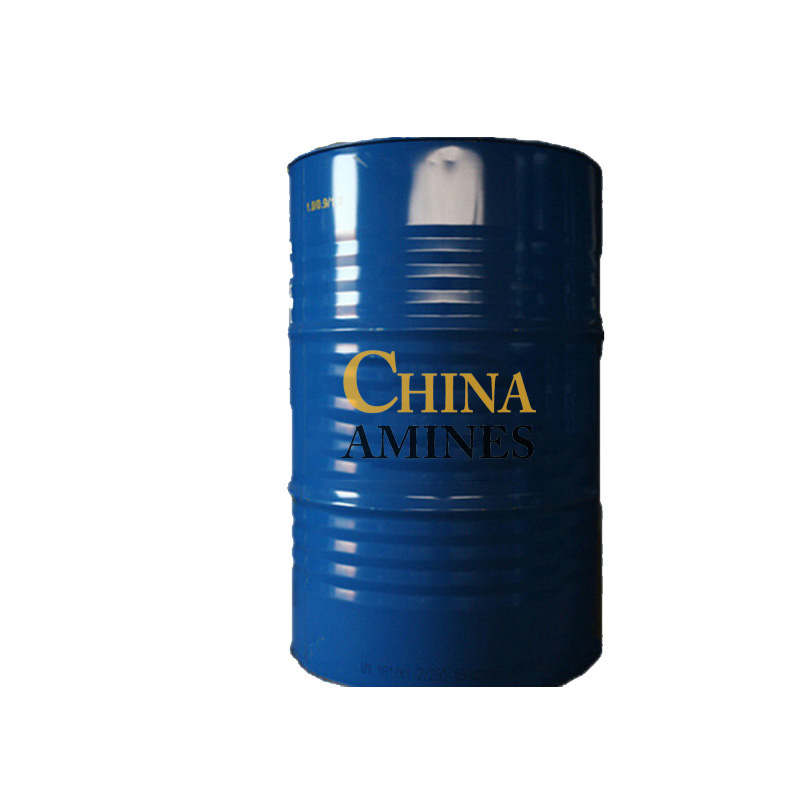1. Chemical Structure and Properties
Molecular Formula: C₁₀H₂₂O₄
Structural Formula:
CH₃(CH₂)₃O(CH₂CH₂O)₃H
A branched glycol ether composed of three ethylene oxide units linked to a butyl group.
Physical Properties:
Appearance: Clear, colorless liquid with a mild, sweet odor.
Boiling Point: 270–275°C; Density: 0.98 g/cm³; Vapor Pressure:<0.001 mmHg at 25°C.
Solubility: Fully miscible with water, alcohols, and polar organic solvents; moderate solubility in hydrocarbons.
Chemical Properties:
Hydrophilic-Lipophilic Balance (HLB): ~5.2, balancing polar and non-polar solvency.
Thermal Stability: Stable up to 220°C; decomposes above 300°C into aldehydes and CO.
Hydrolysis Resistance: Resistant to hydrolysis under neutral and mildly acidic/alkaline conditions.
2. Industrial Applications
Coatings & Inks:
High-Boiling Solvent: Enhances flow and leveling in waterborne and solvent-based coatings.
Coalescing Agent: Improves film formation in latex paints and industrial adhesives.
Cleaning Products:
Heavy-Duty Degreaser: Removes oils, greases, and adhesives in automotive and aerospace applications.
Electronics:
Photoresist Stripping: Cleans residues from semiconductor wafers without damaging substrates.
Flux Remover: Used in PCB assembly to remove soldering residues.
Personal Care:
Emollient: Used in lotions and creams for its moisturizing and low-irritation properties.
3. Safety and Toxicology
Health Hazards:
Acute Exposure:
Skin Contact: Mild irritation (rabbit skin LD₅₀: >2,000 mg/kg); no sensitization observed.
Inhalation: Low volatility minimizes risk (TLV-TWA: 10 ppm recommended); aerosolized mists may irritate the respiratory tract.
Ingestion: Low acute toxicity (oral LD₅₀ rat: >5,000 mg/kg).
Chronic Effects:
Reproductive Toxicity: No teratogenicity in OECD 414 studies.
Organ Toxicity: Negligible hepatotoxicity or nephrotoxicity in subchronic rodent studies.
Protection Measures:
PPE: Nitrile gloves, safety goggles; adequate ventilation for high-temperature processes.
Storage: Stable in HDPE containers; store away from strong oxidizers and heat sources.
4. Environmental and Regulatory Compliance
Environmental Impact:
Aquatic Toxicity: LC₅₀ (fish, 96h): >100 mg/L; EC₅₀ (daphnia): >50 mg/L.
Biodegradability: Readily biodegradable (OECD 301F: >70% in 28 days).
Persistence: Low bioaccumulation potential (log Kow: 1.5).
Regulatory Frameworks:
EU:
REACH: Registered with no SVHC listing; CLP classification Not Hazardous.
USA:
EPA: Exempt from VOC regulations (40 CFR 51.100(s)(1)); TSCA-listed.
China:
GB 13690-2009: Classified as General Chemical (non-hazardous).
Transport:
UN Number: Non-hazardous; no special transport requirements.
5. Case Studies and Application Insights
Case 1: Automotive Waterborne Coatings (BASF, 2023):
Application: TEGBE (5–8% w/w) replaced ethylene glycol ethers in primer formulations.
Result: Reduced VOC emissions by 25% while maintaining adhesion and corrosion resistance.
Case 2: Aerospace Component Cleaning (Lockheed Martin, 2022):
Process: TEGBE-based cleaner removed carbon deposits from turbine blades with 99.9% efficiency.
Cost Savings: Achieved 30% lower solvent consumption via closed-loop recycling.
Comparative Analysis:
TEGBE vs. Triethylene Glycol Monomethyl Ether (TEGMME):
Pros: Higher solvency for non-polar contaminants; better biodegradability.
Cons: Slightly higher viscosity (15 mPa·s vs. 10 mPa·s).
Specifications:
Triethylene glycol butyl ether is a high-boiling, slow-evaporating solvent (≥99% purity), with a boiling point of ~278 °C and density around 0.99 g/cm³, widely used in coatings, cleaners, and dye formulations due to its strong solvency and low odor.


